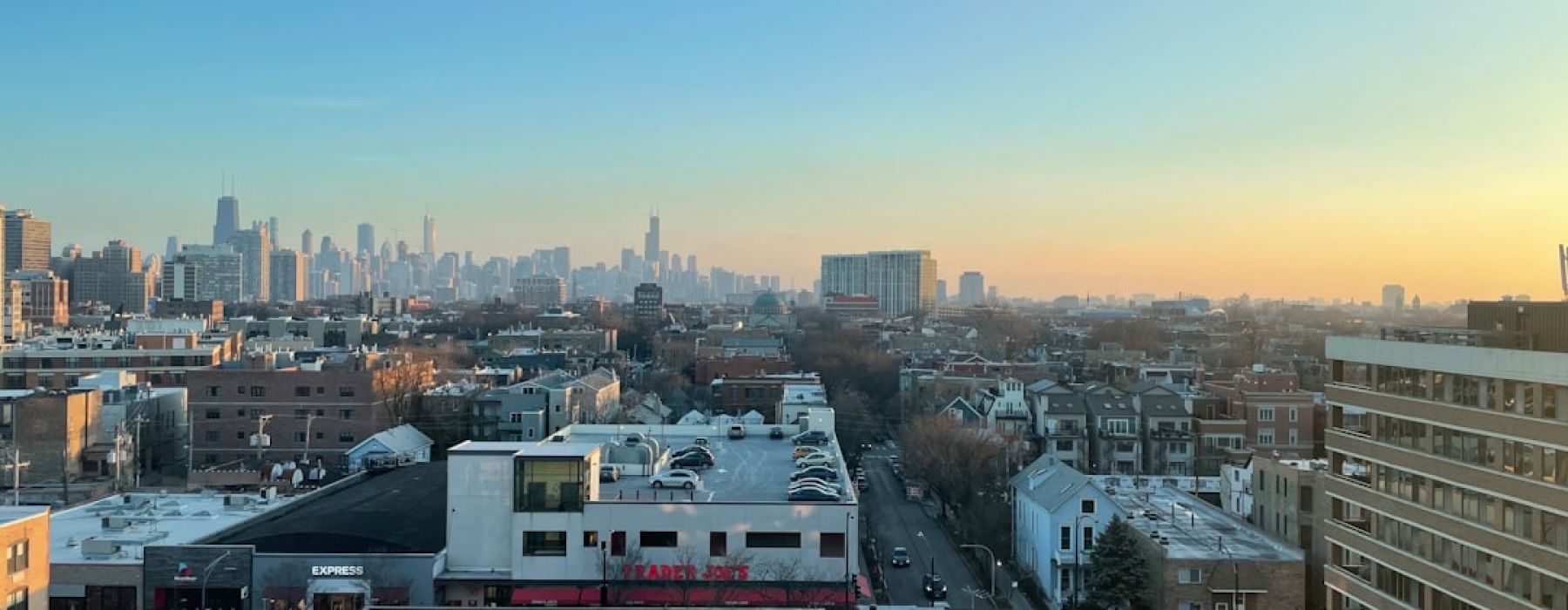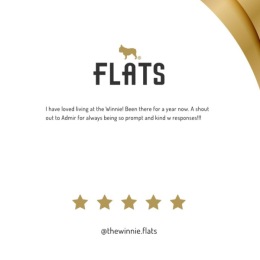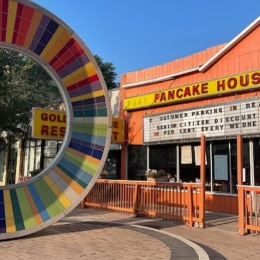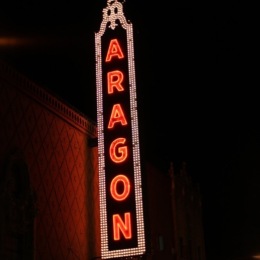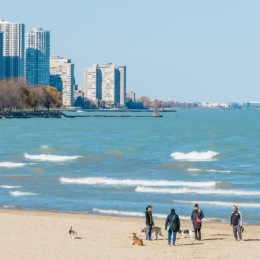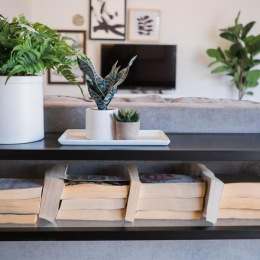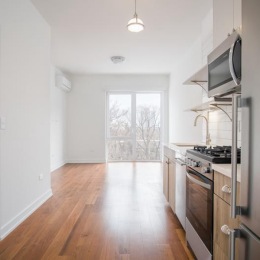Why the Uptown Chicago Neighborhood is Chicago's Most Dynamic Cultural Hub
The Uptown Chicago neighborhood sits just six miles north of the Loop, where historic jazz clubs meet more than 30 Asian restaurants and a sandy lakefront. Once a 1920s entertainment district, Uptown now blends century-old venues with global cuisine, all within a compact, walk-friendly grid served by three CTA Red Line stops.
Quick Facts About Uptown Chicago:
- Population: 57,182 residents across 2.33 square miles
- Location: Foster Ave (north), Montrose Ave (south), Lake Michigan (east), Ravenswood Ave (west)
- Transportation: Wilson, Lawrence, and Argyle Red Line stations plus multiple bus routes
- Demographics: 54.2% White, 17.8% Black, 14.6% Hispanic, 10.5% Asian
- Housing: 71% renters, median household income $55,109
- Key Attractions: Green Mill jazz club, Aragon Ballroom, Asia on Argyle dining district, Montrose Beach
Historic entertainment landmarks like the Green Mill—still home to Al Capone’s booth—share the spotlight with newer draws such as the Argyle Night Market, which welcomes more than 40,000 visitors each summer. A 19-minute train ride whisks residents downtown, while Montrose Beach and the lakefront trail lie a few blocks east of Broadway’s lively retail strip.
Uptown’s knack for honoring its past while welcoming new cultures explains why young professionals, long-time Chicagoans, and global food lovers all converge here.
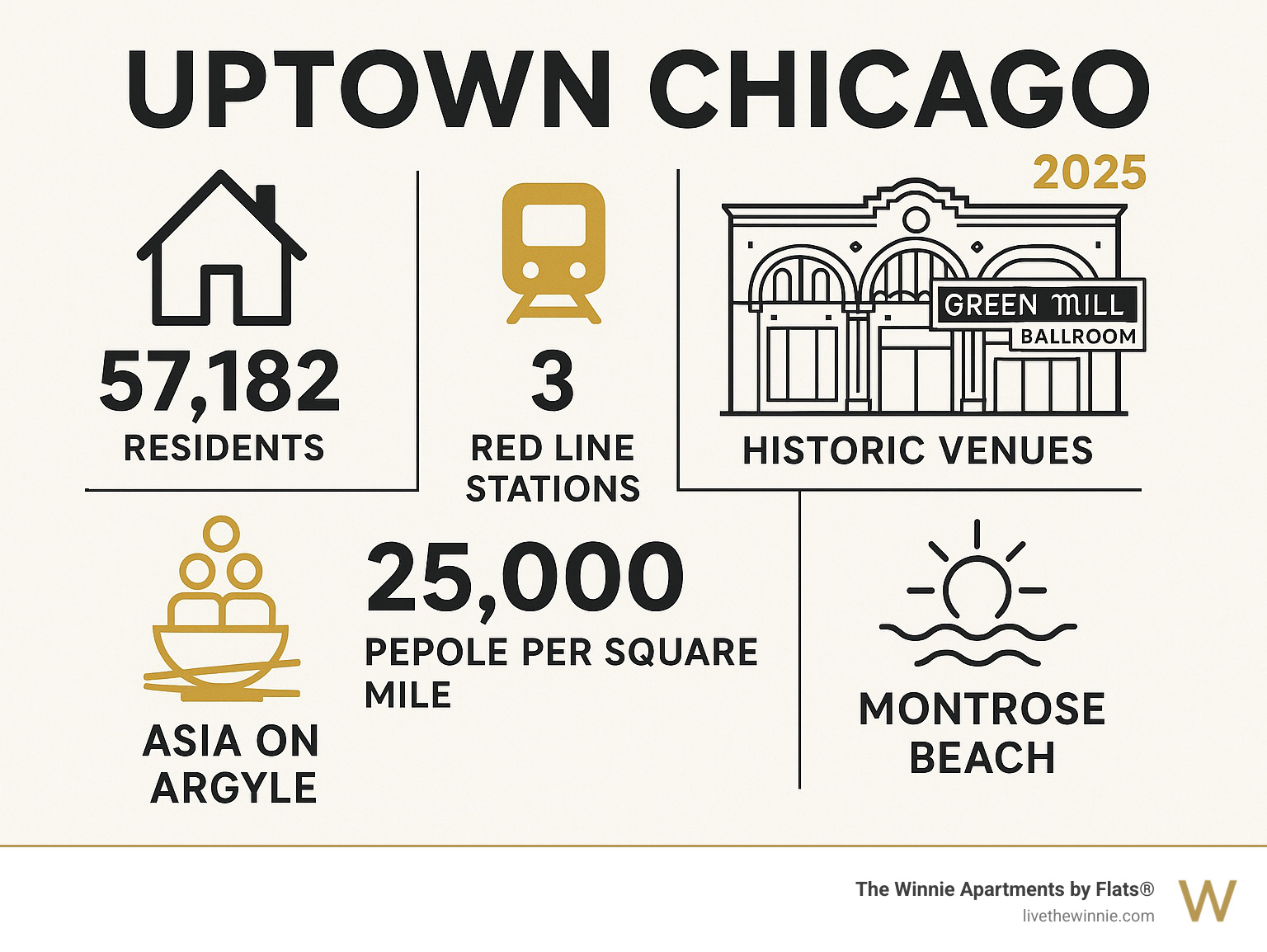
Uptown Chicago Neighborhood at a Glance
The Uptown Chicago neighborhood sits perfectly positioned between downtown Chicago and the northern suburbs, offering residents and visitors the best of both worlds. Foster Avenue forms the northern boundary, while Montrose Avenue and Irving Park Road define the southern edge. Lake Michigan provides stunning eastern views, and Ravenswood Avenue and Clark Street create the western border.
This strategic location makes Uptown incredibly accessible. The neighborhood boasts three CTA Red Line stations - Wilson, Lawrence, and Argyle - providing direct downtown access in just 19 minutes. Multiple bus routes including the 36 Broadway, 81 Lawrence, and 151 Sheridan connect residents to surrounding neighborhoods and attractions.
With 95% of residents reporting sidewalk availability and 92% saying it's walkable to grocery stores, Uptown earns high marks for pedestrian-friendly living. The area's bike-friendly infrastructure includes protected bike lanes and easy access to the lakefront trail system.
Map & Transportation Essentials in the Uptown Chicago Neighborhood
Getting around Uptown is remarkably convenient thanks to excellent public transportation options. The CTA Red Line serves as the neighborhood's transportation backbone, with three strategically placed stations:
- Wilson Station: Completely rebuilt in 2016, featuring the widest platforms in the CTA system
- Lawrence Station: Central hub for the entertainment district
- Argyle Station: Gateway to Asia on Argyle dining corridor
The Purple Line express also stops at Wilson during rush periods, providing additional downtown connectivity. For those traveling by car, Lake Shore Drive runs along the eastern edge, offering scenic routes north and south.
Bus service complements rail access with multiple routes serving different areas. The 36 Broadway bus connects to Lincoln Park and downtown, while the 81 Lawrence provides east-west connectivity. The 151 Sheridan offers another north-south option with stops at major attractions.
Bike infrastructure includes protected lanes on several major streets and direct access to the lakefront trail system. The neighborhood's flat terrain and grid street pattern make cycling both practical and enjoyable.
Current Demographics of the Uptown Chicago Neighborhood
The Uptown Chicago neighborhood stands out as one of Chicago's most diverse communities, with a population of 57,182 residents living across 2.33 square miles. This density of 25,000 people per square mile creates a vibrant urban environment while maintaining neighborhood character.
The demographic breakdown reflects Uptown's multicultural appeal:
- 54.2% White
- 17.8% Black or African American
- 14.6% Hispanic or Latino
- 10.5% Asian
- 2.9% Other races
Educational attainment runs high, with 89.7% of residents holding a high school diploma or higher and 56.4% possessing a bachelor's degree or higher. This educated population contributes to the neighborhood's cultural vibrancy and economic diversity.
The median household income of $55,109 reflects Uptown's accessibility to middle-income residents, while 71% of residents rent their homes versus 29% who own. This rental-heavy market creates a dynamic community with both long-term residents and newcomers finding the neighborhood's attractions.
The median age of 36.6 years indicates a community of young professionals and established residents who appreciate Uptown's unique blend of cultural authenticity and urban convenience.
From Silent Films to Global Stage: A Brief History of Uptown
The Uptown Chicago neighborhood has reinvented itself multiple times throughout its fascinating history. Originally settled in the 1830s, the area remained sparsely populated until the late 1800s when transportation improvements sparked rapid development.
The neighborhood's entertainment legacy began early with Essanay Studios operating from 1907 to 1917, making Uptown the heart of the American film industry before Hollywood's rise. Charlie Chaplin and Gloria Swanson produced films here, establishing the area's creative credentials.
The 1920s brought Uptown's golden age as a major entertainment district. Massive venues like the Aragon Ballroom and Riviera Theatre opened, while the Green Mill became a jazz hotspot during Prohibition. The neighborhood earned the nickname "the Loop's little brother" for its concentration of theaters, hotels, and nightclubs.
Post-World War II brought significant demographic changes as Southern and Appalachian migrants arrived, earning Uptown the moniker "Hillbilly Heaven" in the 1950s and 1960s. The area also became a central hub for Chicago's Native American community from the 1950s through 1980s.
The 1970s saw another major change when Chinese entrepreneurs and Vietnamese refugees following the Fall of Saigon established what would become the Asia on Argyle district. This wave of immigration added another layer to Uptown's multicultural identity.
Recent decades have brought gentrification and revitalization efforts, with historic venues being restored and new developments attracting young professionals while maintaining the neighborhood's diverse character. Research on Chicago entertainment history documents this remarkable change.
Entertainment District Milestones
Uptown's entertainment district has weathered decades of change while maintaining its cultural significance. The Aragon Ballroom, opened in 1926, continues hosting major acts and has become synonymous with Chicago's live music scene. The venue's Spanish-Moorish architecture and 5,000-person capacity make it one of the city's premier concert destinations.
The Riviera Theatre, with more than 100 years of hosting performances, represents another cornerstone of Uptown's entertainment legacy. This intimate venue has adapted to changing musical tastes while preserving its historic character.
The Green Mill stands as perhaps Uptown's most iconic venue. Operating for over 100 years, this jazz club maintains its Prohibition-era atmosphere, complete with Al Capone's preserved booth. The venue's commitment to live jazz seven nights a week has earned it recognition as one of the nation's premier jazz clubs.
The Uptown Theatre, though currently under renovation, represents the neighborhood's grandest entertainment venue. Once described as "an acre of seats in a magic city," this massive theater is expected to reopen and reclaim its place as a cultural landmark.
These venues collectively draw more than 240,000 annual attendees, cementing Uptown's reputation as Chicago's entertainment hub outside the Loop.
Waves of Change & Community Resilience
The Uptown Chicago neighborhood has demonstrated remarkable resilience through multiple waves of demographic and economic change. Each era brought new communities that added to the neighborhood's cultural mix while facing unique challenges.
The post-war period saw Uptown become a crucial settlement area for Native Americans relocating from reservations. The American Indian Center and other organizations established roots here, creating a support network that persists today.
The 1960s and 1970s brought both urban renewal challenges and grassroots organizing. The JOIN (Jobs or Income Now) movement emerged from Uptown, advocating for low-income residents' rights and establishing the neighborhood's tradition of community activism.
Southeast Asian immigration following the Vietnam War created the foundation for today's Asia on Argyle district. Vietnamese and Cambodian refugees established businesses and social services, changing Argyle Street into a cultural corridor that serves the broader metropolitan area.
Uptown has also served as a longtime refuge for LGBTQ+ communities, with venues like The Baton Show Lounge operating for more than 50 years. This acceptance of diversity has become a defining characteristic of the neighborhood.
Recent gentrification pressures have sparked new organizing efforts as long-time residents and newcomers work to preserve Uptown's character while embracing positive changes.
Micro-Neighborhoods & Cultural Hotspots
The Uptown Chicago neighborhood is large enough to contain several distinct areas, each with unique character and attractions. These micro-neighborhoods function as specialized districts while contributing to Uptown's overall vibrancy.
Andersonville extends into southern Uptown, bringing Swedish heritage and Clark Street's boutique shopping scene. This area offers tree-lined residential streets with historic architecture and walkable commercial strips.
Sheridan Park features some of Uptown's most beautiful historic homes, including Prairie School architecture and early 20th-century mansions. The Hutchinson Street Historic District showcases one of the best collections of Prairie-style architecture in the city.
Buena Park, originally developed as a bucolic retreat in the 1860s, evolved into a densely settled area by the 1930s. Today it offers a mix of historic homes and modern conveniences with easy lakefront access.
Margate Park and the lakeside areas provide immediate beach access and recreational opportunities. Clarendon Park rounds out the lakefront districts with green space and family-friendly amenities.
The Uptown Square area centers around the historic entertainment district, with major venues and nightlife concentrated near the Wilson Red Line station.
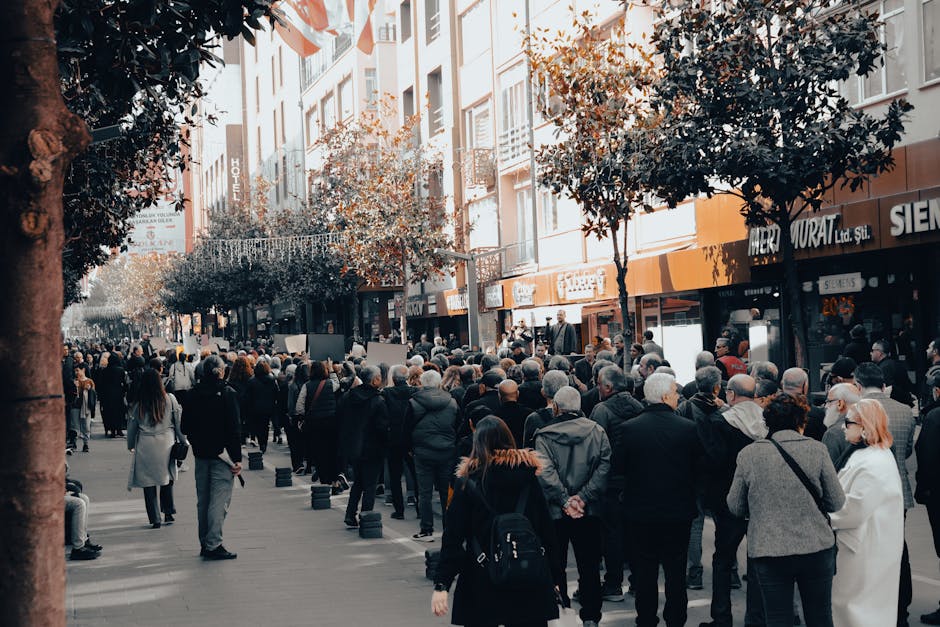
Asia on Argyle: Heart of Uptown Chicago Neighborhood Flavors
Asia on Argyle represents the Uptown Chicago neighborhood's most concentrated cultural district, changing from a Jewish community to an Asian-American hub following the 1975 Fall of Saigon. This vibrant corridor along Argyle Street between Broadway and Sheridan has become a destination for authentic Asian cuisine and cultural experiences.
The district features over 30 restaurants representing Vietnamese, Chinese, Thai, Cambodian, and other Asian cuisines. Sun Wah BBQ, a James Beard Award-winning restaurant, offers tableside Peking duck carving that creates a theatrical dining experience. Pho 777 and other Vietnamese establishments serve authentic pho and banh mi sandwiches that draw food lovers from across the metropolitan area.
The weekly Argyle Night Market, held every Thursday evening in July and August, transforms the street into a busy festival with over 40,000 annual attendees. Cultural performances, street food vendors, and live entertainment create an authentic Asian night market experience.
Argyle Street became Chicago's first "Shared Street" in 2016, featuring brick pavers and no curbs to accommodate outdoor dining and community events. This innovative design allows businesses to expand onto sidewalks and host street festivals.
The district's red ceremonial arch marks the entrance to this cultural corridor, while murals and public art celebrate the area's multicultural heritage. Second-generation business owners continue family enterprises while new establishments add contemporary touches to traditional offerings.
Lakeside Living in the Uptown Chicago Neighborhood
The eastern edge of the Uptown Chicago neighborhood offers some of Chicago's best lakefront living opportunities. Montrose Beach serves as the neighborhood's crown jewel, providing sandy beaches, volleyball courts, and a designated dog beach area.
Montrose Harbor accommodates recreational boating and fishing, while the adjacent Montrose Point Bird Sanctuary attracts birdwatchers hoping to spot some of the 340+ species that visit annually. The sanctuary's location on the lakefront flyway makes it a crucial stopover for migrating birds.
The lakefront trail system provides continuous bike and walking paths connecting Uptown to downtown Chicago and northern suburbs. This infrastructure makes car-free recreation and commuting practical for many residents.
Clarendon Park offers green space and recreational facilities just blocks from the lake, while Chase Park provides additional community amenities. The combination of beach access, parks, and recreational facilities creates an outdoor lifestyle that rivals any neighborhood in the city.
Wilson Skate Park caters to skateboarders and BMX riders, while beach volleyball courts host both casual games and organized leagues. The lakefront's recreational diversity ensures options for residents of all ages and interests.
Top Things to Do in Uptown Right Now
The Uptown Chicago neighborhood packs live music, acclaimed dining, public art, and lakefront recreation into a walkable footprint. Many attractions cluster around the Wilson Red Line stop, so visitors can sample several highlights in a single outing.
Landmarks & Live Entertainment
- Green Mill: 100-plus years of jazz, complete with Al Capone’s preserved booth.
- Aragon Ballroom: Spanish-Moorish concert hall holding 5,000 fans; tickets often sell out early.
- Riviera Theatre: Historic, intimate venue with renowned acoustics.
- Baton Show Lounge: One of the nation’s longest-running drag stages.
- Black Ensemble Theater: Celebrates African-American stories through musical productions.
Dining & Nightlife Trail
- Asia on Argyle: More than 30 Vietnamese, Chinese, Thai, and Cambodian eateries plus the July–August Argyle Night Market.
- Ba Le: Classic banh mi since 1988.
- Demera Ethiopian Restaurant: Shareable injera platters and traditional coffee service.
- Craft-cocktail spots and sports bars line Broadway and Clark, many serving until late to catch the post-concert crowd.
Outdoor Fun & Seasonal Events
- Montrose Beach: Volleyball courts, kayak rentals, and a separate dog-friendly section.
- Argyle Night Market (Thursdays, July–August): Street food, music, and dance performances.
- Lunar New Year Parade: Lion dances and martial arts displays each winter.
- Chicago Pride Parade Kickoff: The march steps off in Uptown every June.
- Uptown Farmers Market (May–Nov, Wednesdays): Produce and local goods at Wilson & Broadway.
Living in Uptown: Housing, Schools & Insider Tips
The Uptown Chicago neighborhood offers diverse housing options that attract both young professionals and established residents. The rental market dominates, with 71% of residents renting versus 29% owning their homes. This creates a dynamic community with both long-term residents and newcomers regularly finding the neighborhood's attractions.
Historic architecture includes beautiful courtyard buildings, Prairie School homes, and Art Deco apartment buildings. These structures provide character while offering modern amenities through careful renovation and updating.
Truman College serves 23,000 faculty and students, making it a significant educational institution within the neighborhood. The college's programs serve both traditional students and adult learners seeking career advancement.
Chicago Public Schools serve elementary-age children, with several options within the neighborhood boundaries. The area's educated population and community involvement contribute to active parent participation in school activities.
The Uptown Branch of the Chicago Public Library provides community resources including meeting spaces, computer access, and cultural programming. This institution serves as a community gathering place while supporting educational needs.
Local politics remain active, with residents engaged in issues affecting neighborhood development and character preservation. Community organizations provide channels for resident input on planning decisions and policy changes.
Apartment Styles & Modern Conveniences
Historic courtyard buildings represent some of Uptown's most charming housing options, featuring vintage details and mature landscaping. These structures often include hardwood floors, high ceilings, and architectural details that reflect the neighborhood's history.
New mid-rise developments provide modern amenities while maintaining neighborhood scale. These buildings often feature fitness centers, rooftop terraces, and in-unit laundry facilities that appeal to young professionals.
Lake-view towers offer stunning views of Lake Michigan and the Chicago skyline. These high-rise options provide luxury amenities and convenient access to both lakefront recreation and downtown commuting.
Modern studio and one-bedroom apartments, like those offered by The Winnie Apartments by Flats®, combine luxury and convenience in the heart of Uptown. These contemporary options provide residents with easy access to the neighborhood's cultural attractions while offering modern amenities and community living.
The diversity of housing options ensures that residents can find accommodations matching their lifestyle preferences and budget requirements. From historic charm to modern convenience, Uptown's housing market offers something for everyone.
Local Tips for Newcomers
Riding the Red Line during off-peak hours provides the most comfortable commuting experience, as rush hour trains can become crowded. The 19-minute trip to downtown makes Uptown an excellent choice for professionals working in the Loop.
Booking balcony seats at the Aragon Ballroom early ensures the best concert experience, as these tickets often sell out for popular shows. The venue's Spanish-Moorish architecture is best appreciated from the balcony level.
Visiting Downstate Donuts early in the morning guarantees the best selection of fresh donuts and coffee. This local favorite often sells out of popular varieties by mid-morning.
Sitting in Al Capone's booth at the Green Mill provides a unique historical experience while enjoying live jazz. The booth at the end of the bar remains a popular attraction for both tourists and locals.
Respecting residential parking zones helps maintain good relationships with neighbors and avoids parking tickets. Many areas have permit parking restrictions that are strictly enforced.
Learning about the diverse cultural events throughout the year helps newcomers integrate into the community and find the neighborhood's rich cultural offerings.
Frequently Asked Questions about the Uptown Chicago Neighborhood
Is Uptown safe for night outings?
The Uptown Chicago neighborhood is generally considered safe for night activities with basic urban awareness. The entertainment district around Wilson Station remains active throughout the evening, with good lighting and regular foot traffic from concert-goers and restaurant patrons.
The area's numerous venues and late-night establishments create natural surveillance, while CTA stations provide safe transportation options. Like any urban neighborhood, staying aware of surroundings and traveling in groups when possible improves safety.
Crime statistics show that while property crime occurs, violent crime rates are manageable with proper precautions. The neighborhood's active nightlife scene and community engagement contribute to overall safety through increased activity and attention.
Police presence increases during major events and weekend evenings, particularly around entertainment venues. Community policing initiatives have strengthened relationships between residents and law enforcement.
What's the best way to get to Montrose Beach without a car?
Multiple transportation options make reaching Montrose Beach convenient for residents throughout the Uptown Chicago neighborhood. The 151 Sheridan bus provides direct service to the beach area, with stops near the sand and recreational facilities.
The Red Line to Lawrence Station followed by a short walk east offers another car-free option. This route takes about 10 minutes on foot and provides opportunities to explore the neighborhood along the way.
Biking via the lakefront trail system provides scenic transportation while offering exercise opportunities. Protected bike lanes connect interior neighborhoods to the lakefront trail, making cycling both safe and enjoyable.
Walking from most Uptown locations takes 15-20 minutes and provides opportunities to explore the neighborhood's architecture and street life. The flat terrain and grid street pattern make navigation straightforward.
Which micro-neighborhood suits foodies the most?
Asia on Argyle clearly stands out as the Uptown Chicago neighborhood's premier dining destination, offering the highest concentration of authentic Asian restaurants in the metropolitan area. The district's 30+ establishments represent Vietnamese, Chinese, Thai, Cambodian, and other Asian cuisines.
The weekly Argyle Night Market adds street food vendors and cultural performances, creating an authentic Asian night market experience. This Thursday evening event draws food lovers from across the city.
However, other areas also offer excellent dining options. The broader Uptown area features Ethiopian restaurants, Middle Eastern establishments, and Latin American cuisine that reflect the neighborhood's diversity.
The entertainment district around Wilson Station provides numerous late-night dining options that cater to concert-goers and night shift workers. These establishments often stay open later than restaurants in other neighborhoods.
Conclusion
The Uptown Chicago neighborhood represents everything that makes Chicago special - cultural diversity, historical significance, and community spirit all wrapped into one incredibly walkable and accessible area. From the jazz legacy of the Green Mill to the authentic flavors of Asia on Argyle, from the sandy beaches of Montrose to the architectural treasures of Sheridan Park, Uptown offers experiences that satisfy both longtime Chicagoans and newcomers alike.
The neighborhood's remarkable change from silent film studios to jazz clubs to multicultural dining destination demonstrates its resilience and adaptability. Each wave of residents has added new layers to Uptown's character while respecting what came before, creating a community that truly embodies the American melting pot ideal.
The lakefront location provides recreational opportunities that rival any neighborhood in the city, while three Red Line stations ensure that downtown Chicago remains just 19 minutes away. This combination of natural beauty and urban convenience makes Uptown an ideal choice for residents seeking both cultural authenticity and modern amenities.
For those considering making Uptown home, The Winnie Apartments by Flats® offers modern studio and one-bedroom apartments that perfectly complement the neighborhood's blend of luxury and accessibility. Located in the heart of this dynamic community, residents enjoy easy access to all of Uptown's cultural attractions while benefiting from contemporary amenities and community living.
Whether you're drawn by the historic entertainment venues, the incredible dining diversity, the lakefront recreation, or the vibrant community spirit, the Uptown Chicago neighborhood offers an urban living experience that's both authentically Chicago and uniquely welcoming. In a city known for its distinct neighborhoods, Uptown stands out as a place where history and progress, tradition and innovation, local character and global influence come together to create something truly special.
Visit our Neighborhood page to learn more about why Uptown could be your perfect Chicago home base.


